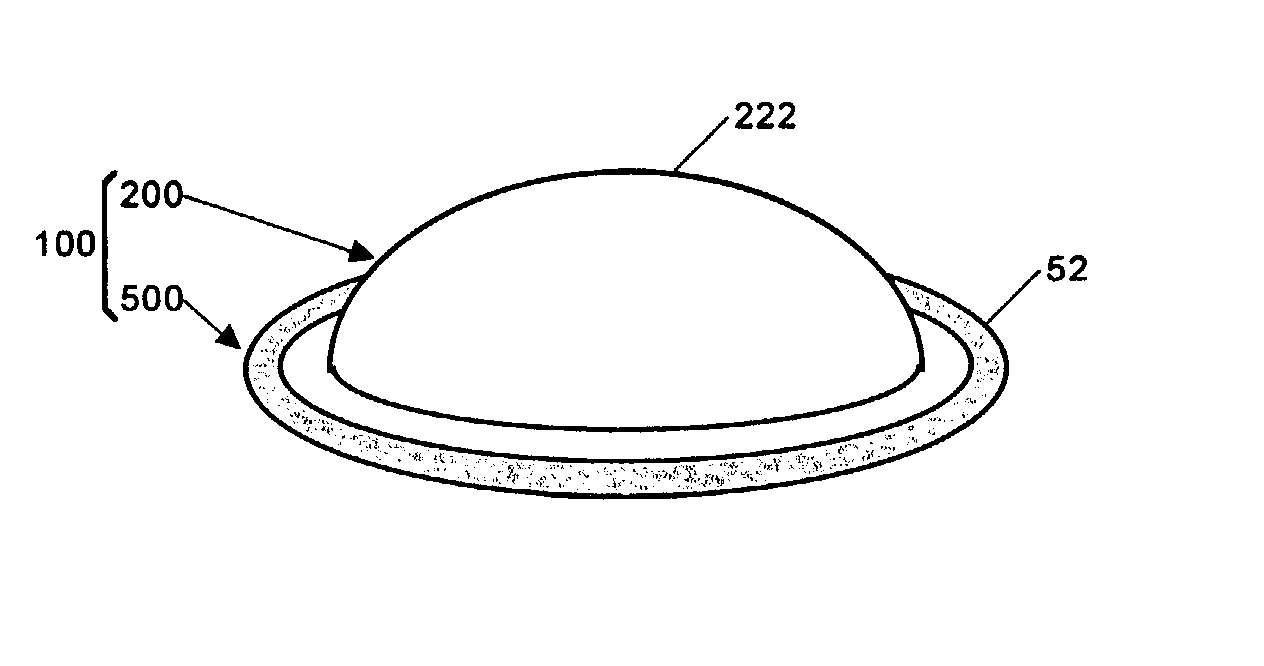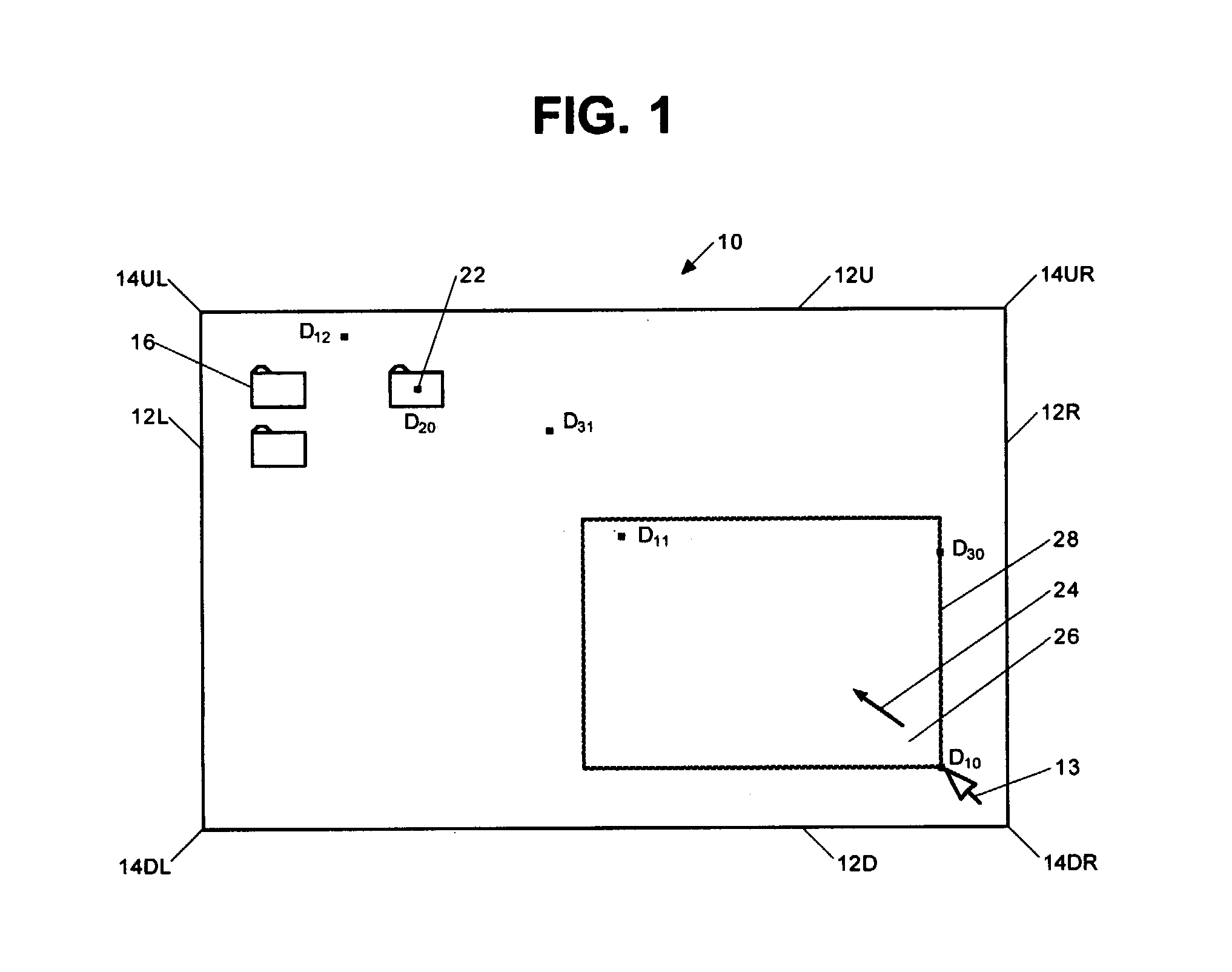Cursor control systems and methods
a cursor control and cursor technology, applied in the field of cursor control systems and methods, can solve the problems of time-consuming and at best cumbersome right-arrow keys, devices that do not allow the user to coarsely, and conventional cursor control devices
- Summary
- Abstract
- Description
- Claims
- Application Information
AI Technical Summary
Problems solved by technology
Method used
Image
Examples
Embodiment Construction
[0122] The present invention generally relates to various exemplary aspects and / or embodiments of cursor control systems and methods therefor to provide coarse and fine control in positioning cursors or pointers used on display screens of display units of various information processing devices. More particularly, such cursor control systems and related methods allow the user to quickly move such a cursor to a vicinity of a target point through an initial coarse maneuvering, and to precisely position such a cursor in the target position through a subsequent fine maneuvering. As will be described in greater detail below, such cursor control systems and related methods of the present invention may advantageously allow the user to move the cursor at one of different (e.g., normal, fast, slow, and / or adaptive) speeds on the display screen such that the user can move and position the cursor in the target position without having to apply multiple movements or strokes. Accordingly, the move...
PUM
 Login to View More
Login to View More Abstract
Description
Claims
Application Information
 Login to View More
Login to View More - R&D
- Intellectual Property
- Life Sciences
- Materials
- Tech Scout
- Unparalleled Data Quality
- Higher Quality Content
- 60% Fewer Hallucinations
Browse by: Latest US Patents, China's latest patents, Technical Efficacy Thesaurus, Application Domain, Technology Topic, Popular Technical Reports.
© 2025 PatSnap. All rights reserved.Legal|Privacy policy|Modern Slavery Act Transparency Statement|Sitemap|About US| Contact US: help@patsnap.com



